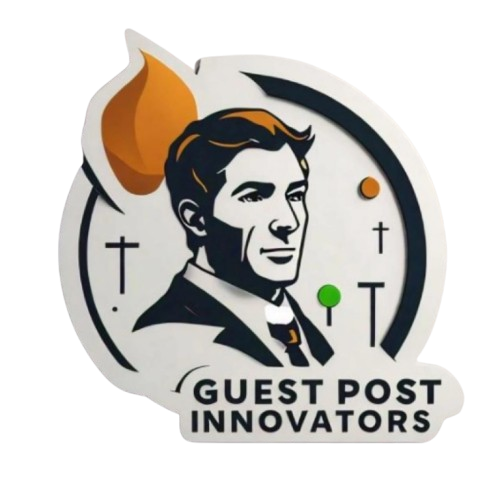Recent Posts
The Role of an Auto Detailing SEO Agency in Growing Local Businesses
Legacy Modernization in 2025: What CIOs Actually Need to Focus On
- August 6, 2025
- 2:00 pm
- Guest Post Innovators

There was a time when legacy systems were the backbone of progress. Built to last, heavily customized, and often still running the most mission-critical parts of the business — many of these systems have earned their place. But by 2025, it’s clear that the same platforms that once gave companies an edge are now slowing them down.
For CIOs, this is no longer a conversation about “if” but “how fast.” Modernization is no longer something to kick down the road. It’s a strategic shift that’s now deeply tied to growth, security, and even talent. And yet, there’s still hesitation. Old systems are familiar. Untangling them feels risky. But inaction? That’s the real risk.
Why Legacy Can’t Be Ignored Anymore
Legacy systems modernization still work and that’s exactly why they get overlooked. But just because they function doesn’t mean they’re harmless. Quietly, they drain IT budgets, expose the business to security risks, and make it nearly impossible to connect with the modern tools that drive progress.”
Here’s what tends to pile up when those systems aren’t addressed:
Costs go up. Keeping old hardware and unsupported software afloat is expensive.
Security falls behind. Outdated systems lack patches and vendor support.
Data becomes fragmented. Integration with new tools becomes nearly impossible.
Employees lose time. Clunky interfaces and manual workarounds slow everything down.
Compliance gets harder. Meeting evolving regulations with outdated architecture is a challenge.
Growth stalls. Scaling becomes a gamble when the foundation won’t flex.
Modernization: A Strategic Lever, Not Just an Upgrade
This isn’t about chasing shiny new tools. For CIOs, modernization is about enabling the business to move faster, adapt sooner, and operate more efficiently. That means aligning the right technical approach with what the business is actually trying to achieve.
Some of the real-world outcomes that come from getting this right:
- The ability to pivot quickly when the market shifts.
- A leaner tech stack that costs less to run and scale.
- Happier employees working with tools that don’t frustrate them.
- Access to cleaner data that drives faster decision-making.
- Better odds at hiring engineers who want to build — not babysit.
- And most importantly, an ecosystem that plays nicely with CRMs, AI, cloud tools, and whatever else comes next.
Which Strategy Fits? It Depends.
Modernization isn’t a single playbook. What works for one org might break another. CIOs need to take stock of how core each system is, what’s riding on it, and what kind of disruption the business can realistically handle. Sometimes the best move is a full rebuild. Other times, it’s wrapping legacy code with modern APIs and buying time.
Here’s a breakdown of six approaches companies are using in 2025 — each with different levels of effort, payoff, and complexity.
1. Rehosting (aka Lift-and-Shift)
Sometimes the fastest way forward is to simply get out of the data center. Rehosting means migrating an app to the cloud without rewriting anything. It’s quick, usually stable, and doesn’t touch the code.
- No code changes = less risk
- Good fit for tight timelines
- Reduces hardware costs
- Offers cloud scaling and recovery options
- Works as a starting point for future transformation
2. Refactoring
This is where code gets cleaned up — without changing how the system behaves on the surface. Refactoring pays off long-term by making the application easier to maintain and adapt later.
- Fixes old, messy code
- Prepares apps for cloud-native architecture
- Improves speed and stability
- Helps dev teams move faster
- Cuts down on repetitive bug-fixing cycles
3. Replatforming
Replatforming tweaks parts of the system to work better in a new environment, usually cloud. It’s a middle path between rehosting and full rebuilding.
- Migrates key components (like databases) to modern platforms
- Adds support for automation and DevOps tools
- Less disruptive than full rearchitecture
- Boosts performance without a full rewrite
- Keeps timelines and costs in check
4. Rearchitecting
This is the heavier lift — breaking the monolith and reworking the architecture for the cloud. Often involves moving to microservices or serverless setups.
- Enables isolated scaling
- Improves system resilience
- Speeds up deployments with CI/CD pipelines
- Reduces long-term infrastructure waste
- Opens the door to AI, IoT, and automation features
5. Application Rewriting
Sometimes the old app just can’t be salvaged. Rewriting means building a new one from scratch, using modern languages, frameworks, and clean architecture.
- Best when legacy code is too brittle
- Aligns with current business needs
- Optimizes performance and user experience
- Allows full redesign of workflows
- Higher upfront investment, stronger long-term ROI
6. Application Encapsulation
Encapsulation is a way to modernize without tearing things apart. It wraps old apps in modern APIs so they can connect to other systems.
- Minimal change to the legacy system
- Enables integration with CRMs, mobile apps, and portals
- Low risk, fast delivery
- Extends the life of the legacy app
- Useful when there’s no time for full modernization
Final Thought: Modernization Isn’t Optional Anymore
That’s no longer just standing still. It’s slipping. A small step rewriting a part of the code, moving one system to the cloud can be enough to start. What matters is that the decision isn’t just technical. It has to line up with what the business is trying to become. The legacy stuff got the job done for years. But it won’t carry things much further. What happens next is up to whoever’s willing to move first.
Read More:visit our website.https://guestpostinnovators.com/
Guest Post Innovators, a leading digital marketing agency, delivers comprehensive digital marketing services






